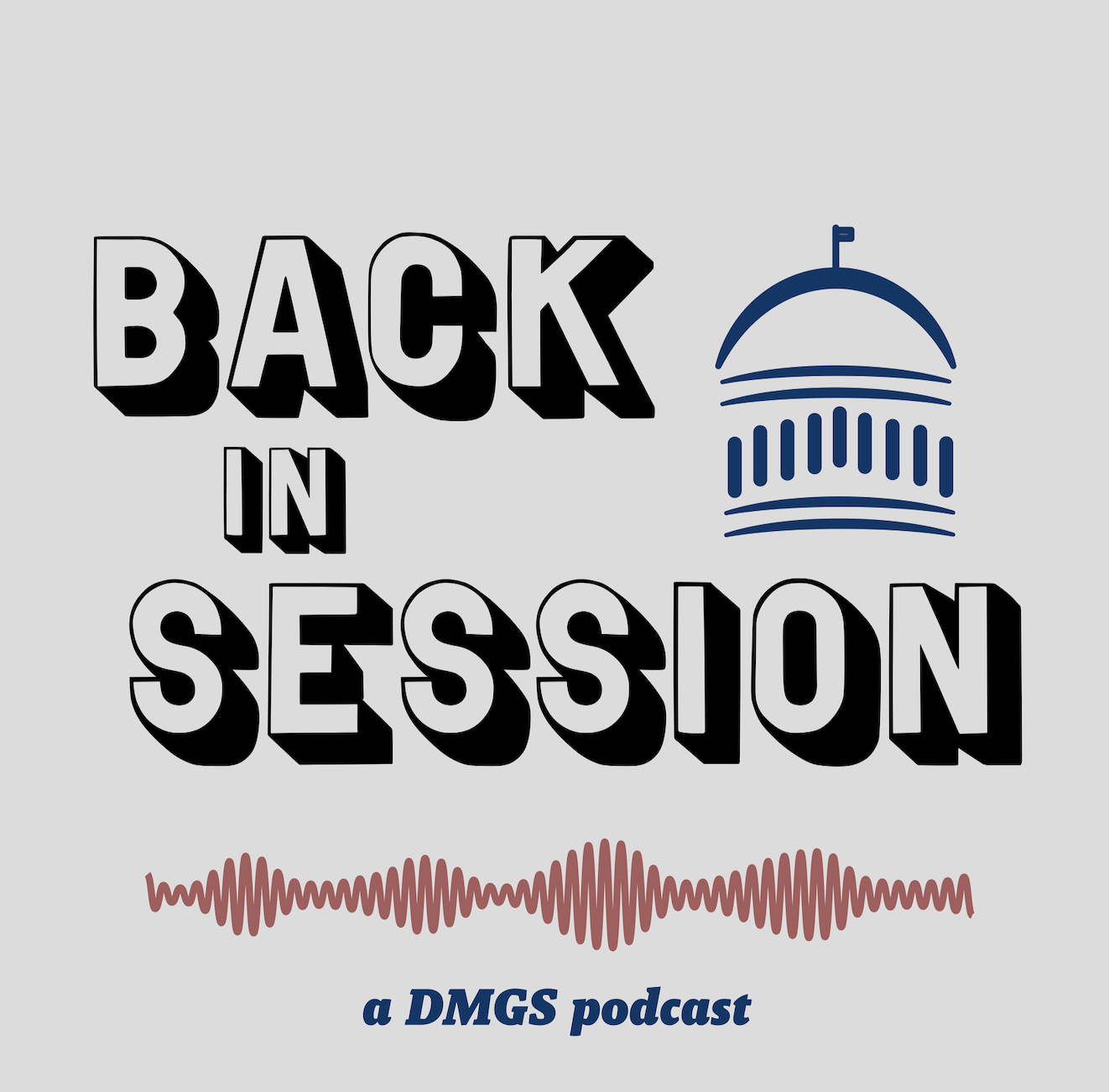In 2015 a New Orleans home fire killed three children, a mother, and a grandmother. Because the family did not have a smoke detector, the New Orleans fire department wanted to create a program to accurately identify vulnerable neighborhoods with homes that may not have the devices. With the help of a New York-based tech firm, the New Orleans Office of Performance and Accountability began using analytics to identify vulnerable areas.
The team gathered information on neighborhoods with young children, elderly populations and dilapidated homes. While the fire department had issued smoke detectors previously, they were only offered to people who requested them. Under the old program, the fire department gave away 800 smoke detectors. The new analytics program helped install 18,000 smoke detectors since beginning in 2015. A few months after the program began, fire trucks arrived at a residence with 11 family members outside their burning home. They were awakened by a smoke detector recently installed by the outreach program.
The New Orleans smoke detector program illustrates the benefits of using data to increase public safety. The advent of new technical applications has given municipal administrators access to information on public health, housing, transportation, crime, infrastructure and more. Additionally, the data provides administrators with the ability to increase efficiency and improve essential services. As populations increase and more citizens flock to larger urban areas, cities will need to ensure the efficient allocation of resources for healthy and sustainable communities.
According to the United Nations, 54 percent of people lived in cities in 2014, but that’s projected to grow to 66 percent by 2050. Cities have turned to analytics and digital applications to streamline government services while reducing costs. With dramatic population increases, it’s estimated that cities around the globe will invest $40 trillion in infrastructure upgrades over the next 20 years, according to Smart America, an Obama-era initiative for solving regional problems with innovative solutions. Furthermore, spending on smart technology has grown from 0.7 percent of city IT budgets in 2005 to 4.1 percent in 2015. That percentage is expected to grow to 7.5 by 2025, according to Deltek, an information solutions provider for government contractors.
Smart City remains a broad term, but using data to improve operations constitutes a key ingredient. For the most part, cities with IoT (Internet of Things) applications like sensors, smart lights or other advanced technologies, offer insight into population patterns, infrastructure usage, and public services. Moreover, the growth of cloud technology, digital information storage, and other computing services has made it easier to compile and analyze data. As a result, administrators can better track pollution levels, gunshots, foot traffic and other pertinent statistics to help streamline resources.
In September 2015, President Obama announced a $160 million Smart Cities Challenge to help regional communities research and leverage new technology collaborations for tackling traffic congestion, crime, economic growth and improving the delivery of overall services. Roughly $115 million went towards unlocking new solutions in safety, energy, climate preparedness and transportation with grants coming from various federal agencies.
“Every community is different, with different needs and different approaches. But communities that are making the most progress on these issues have some things in common. They don’t look for a single silver bullet; instead, they bring together local government and nonprofits and businesses and teachers and parents around a shared goal,” Obama said in a statement during the program’s announcement.
After receiving 78 applications from communities around the country, the Smart Cities initiative selected Columbus, Ohio, in June 2016 to receive $40 million to help prototype the future of urban transportation. Four months later, Transportation Secretary Anthony Foxx announced $65 million in grants for advanced transportation technologies, including $11 million in Pittsburgh for smart traffic lights, and $6 million in Denver to help alleviate traffic congestion during rush hour.
In addition to the federal government’s support, universities, private companies and nonprofits have played a large role in driving technology-enabled solutions. These entities have worked together to support Smart City initiatives around the country. Among the highest-profile partnerships includes a collaboration among Microsoft, the Global Initiative for Inclusive Information and Communication Technologies, and World ENABLED, a nonprofit that advocates disabled people. The collaboration, which was announced in May, aims to help disabled and aging populations access Smart City technology throughout the country.
As more cities invest in smarter technology, funding growth will continue. In 2015, global investment in IoT applications grew by $14 billion from 2015 to $36 billion, according to Business Insider. Bank of America Merrill Lynch released a report in March that estimates a $1 trillion investment in Smart City technology by 2020, with infrastructure driving much of the increase.
As cities figure out the best way to leverage IoT applications in support of their needs, a number of communities have already invested in technology to help improve their respective cities. Here’s a snapshot of what some cities have done to improve sustainability.
Columbus, Ohio
After beating out 77 other cities, including Austin, Pittsburgh, Portland and San Francisco, Columbus received $50 million in grant funding from the federal government to help develop intelligent transportation systems. In addition to the grants, private companies and other organizations have pledged $277 million in matching funds. The Smart Cities Initiative in Columbus also gathered an additional $90 million in federal funding for a total of $417 million. Among the biggest contributors includes American Electric Power, which has pledged $181 million to help implement 894,000 smart meters that send readings electronically. With the funding, Columbus aims to bring more electric vehicle charging stations, street lights that act as wireless Internet hubs, emergency vehicles that interact with traffic signals, and driverless shuttles. The plan also calls for introducing 780 electric vehicles into the city’s public and private sectors by 2020. The Ohio State University will also provide $64 million in research initiatives. In July, the Columbus Transit Authority said it was going to update its fare boxes on buses to allow payments with a phone. Riders will also be able to update their fare cards online. Columbus also plans to market electric cars around the city, while also expanding power stations to 305 from 108 in the seven-county region. Columbus has until 2020 to use all the funds.
San Francisco
Although San Francisco lost out to Columbus, the U.S. Department of Transportation awarded the city with a $10 million grant to help alleviate traffic congestion. The funding supports six transportation projects with the help of the San Francisco County Transportation Authority and the University of California Berkeley: more high-occupancy vehicle lanes for buses and carpools, more curb space for carpool pickups and drop-offs, smart traffic signal systems to help improve flow and safety, connect corridors for pedestrians and bicyclists, create connected electronic toll systems, and deployed testing of autonomous electronic shuttles on Treasure Island.
As a hub for innovation, San Francisco has already begun leveraging tech applications to solve other metropolitan issues. San Francisco utility companies provide mobile access to near-time energy use data, as well as advice on how to save money. The city also began using sensors to help monitor parking spaces, while another application helps drivers find available parking spaces in city garages. As part of their Smart City application, San Francisco wants to phase out single occupancy vehicles by adopting ACES vehicles (Autonomous, Connected, Electric and Shared vehicles). Ultimately, the city wants to turn parking spaces into green spaces or locations for affordable housing.
Chicago
The Windy City received a $3.1 million grant as part of the Smart Cities Challenge to fund the Array of Things Project, which helps the city monitor environmental and infrastructure activity. With the grant, Chicago installed more than 500 nodes throughout the city to capture data on air quality, climate, traffic, and other urban features. The partnership with the Argonne National Laboratory, the University of Chicago and the city hopes to create an environment that improves public safety, decrease traffic congestion and the region’s carbon footprint. Chicago hopes to use the data to help create sustainable solutions.
While many cities have used high tech gadgetry as part of their Smart City initiatives, Chicago has used simple tools to create sustainable solutions. Chicago’s water department has spent $6 million over two years to give away 123,000 rain barrels to residents. The 55-gallon barrels, which attach to rain spouts, reduces the amount of water going into the sewer system and allows residents to use the water for gardening or other needs. With roughly 40 percent of Cook County impermeable due to concrete structures, the rain barrels are an asset in stormwater management.
Pittsburgh
Like San Francisco, Pittsburgh was among the finalists for the Federal Government’s Smart City Challenge. In lieu of the grant, the Steel City received $11 million in funds from USDOT. Four months before the USDOT granted the funding, the Pennsylvania Department of Transportation offered $11 million in support for the city’s traffic project. All told, local, state and federal sources have pledged $30 million to help support a traffic management center and create adaptive traffic signals that can read conditions at 126 intersections. These signals can use cameras and radar to read traffic on side roads, including bicyclists, and change according to the amount of traffic. The funds will also help city administrators gather information for future traffic decisions. When the program is finished, Pittsburgh will have the largest adaptive traffic signal system in the United States.
Pittsburgh’s Department of Public Works has also announced plans to add nearly 1,200 smart trash cans throughout the city. The trash cans are equipped with sensors that self-monitor garbage levels and inform city workers if receptacles need to be emptied. According to the Department of Public Works, the smart trashcans will allow the department to reallocate 15,000 working hours towards other city projects.
Denver
Like Pittsburgh and San Francisco, Denver was among several finalists in the Smart City Challenge. The U.S. Department of Transportation awarded Denver County with a $6 million grant to help implement traffic management technologies. Denver is working with the mobile application called Waze, a mobile navigation tool to help motorists identify road closures, congested traffic, construction, and other traveler information. Denver hopes to build a communication network among 1,500 city vehicles which will alert each automobile of accidents in hopes of reducing crashes by 30 percent in certain locations.
Denver has also partnered with Panasonic, Xcel Energy and the Department of Energy to help create a mixed-use facility with 1.5 million square feet of office space, 500,000 square feet of retail and 2,500 square feet of housings units. The community will also contain smart lighting and parking, electric vehicle charging stations, environmental sensors, high-speed WiFi and autonomous electronic vehicle shuttles.
Kansas City
Kansas City opened an online portal in early 2017 to help drivers find parking spots in downtown. The digital application also shows traffic speed and real-time location of the city’s streetcar. As part of the initiative, Kansas City has installed sensors along the streetcar’s 2.2-mile light-rail line, allowing the portal to track the streetcar’s movements and gather information. The sensors will also capture foot traffic, giving nearby entrepreneurs and small business owners valuable information. Kansas City plans to invest $3.7 million in high-tech innovations, with another $12 million pledged from private companies, including Sprint Cisco Systems. Ultimately, the city wants to increase the sensors from 2.2 miles to 10 miles.
Louisville, Ky.
In 2015, Louisville began working with a respiratory health startup and the Institute for Healthy Air Water and Soil to help gather information on local air quality. The coalition helped supply 1,000 inhalers to Louisville residents suffering from asthma. The inhalers had sensors installed to help officials map where poor air quality had triggered usage. In one instance, the city was able to identify a portion of town that had three times as much use compared to other locations. Further analysis revealed a significant level of congested traffic in the neighborhood. As a result, the city has planted a belt of trees separating the road from nearby neighborhoods to reduce particle matter in the area. Doctors were able to take the data from the sensors and tailor treatment plans for individuals, with patients experiencing significant improvement.
Other Cities
A host of other cities has implemented a number of initiatives, giving citizens information and methods into critical matters. These municipalities have indirectly served as test labs for other local governments seeking improved services. Coupled with proof of success and budget limitations, public-private partnerships have emerged as a viable path toward innovative solutions. These private entities could provide a wide degree of expertise and flexibility in supporting such endeavors. Although ensuring improved services and increased efficiency while creating a profit-incentive can create challenges, IBM, Cisco and Microsoft, and a host of others, have begun working with municipalities across the country.
Smart City methods also raise a number of legal questions, especially concerns about government surveillance, personal privacy, and cybersecurity. Because many Smart City initiatives and digital programs use complex algorithms, there’s a fear that programs based on analytic data could create unintended consequences. As civic leaders witness the benefits of Smart City initiatives, it will become paramount for other administrators aiming to improve their communities to responsibly implement IoT applications. Moreover, with a trove of data stored in cloud technology, critical data concerning infrastructure and citizens must remain secure from cyber threats.
In early August, Senators Mark Warner (D-VA), Steve Daines (R-MT) and Corey Gardner (R-CO) introduced the Internet of Things Cybersecurity Improvement Act of 2017. The bill would require IoT devices sold to government entities to meet certain requirements, including no fixed passwords and no known security software vulnerabilities.
“The Internet of Things (IoT) landscape continues to expand, with most experts expecting tens of billions of devices operating on our networks within the next several years,” said Gardner in a release. “As these devices continue to transform our society and add countless new entry points into our networks, we need to make sure they are secure from malicious cyber-attacks.”
Another question centers on the President’s agenda. Donald Trump pledged to reinvest in America’s infrastructure during his 2016 presidential campaign, but his domestic legislative agenda has stalled. However, if President Trump does get renewed investment in infrastructure approved in Congress, smart technology could help sustain bridges, roads, utility lines and other critical structures for the next several generations. Furthermore, if America wants to maintain its mantle as a leader in innovation and technology, it must keep pace with places like Barcelona, Berlin, Singapore and Hong Kong, all cities which have made significant investments in smart technology to improve infrastructure. In any event, if supporters believe that Smart Technology can transform our cities in healthy and sustainable communities, it will take a significant federal investment to ensure an equitable distribution benefits.
Latest News
Photo credit: iStock.com/yacobchuk The use of cell phones by students in classrooms is on the rise, despite 77% of schools prohibiting cell phones at school for non-academic use. With students often disregarding these rules or [...]
In the latest episode of the "Back in Session" podcast, hosts Ryan Stevens and Ryan DeMara delve into the innovative world of AI technology applied in gun detection with Burgess Nichols from ZeroEyes. Starting with [...]
tiktok bill As many states around the country have taken action on various TikTok bills, the United States House of Representatives is considering whether to pass legislation requiring TikTok’s Chinese parent company to sell the [...]
Photo credit: iStock.com/lakshmiprasad S In 2023, DMGS covered states taking mostly executive action to ban or regulate TikTok in some capacity. Entering 2024 legislative sessions, lawmakers around the country have introduced similar legislation. Indiana: Bill [...]






Stay In Touch